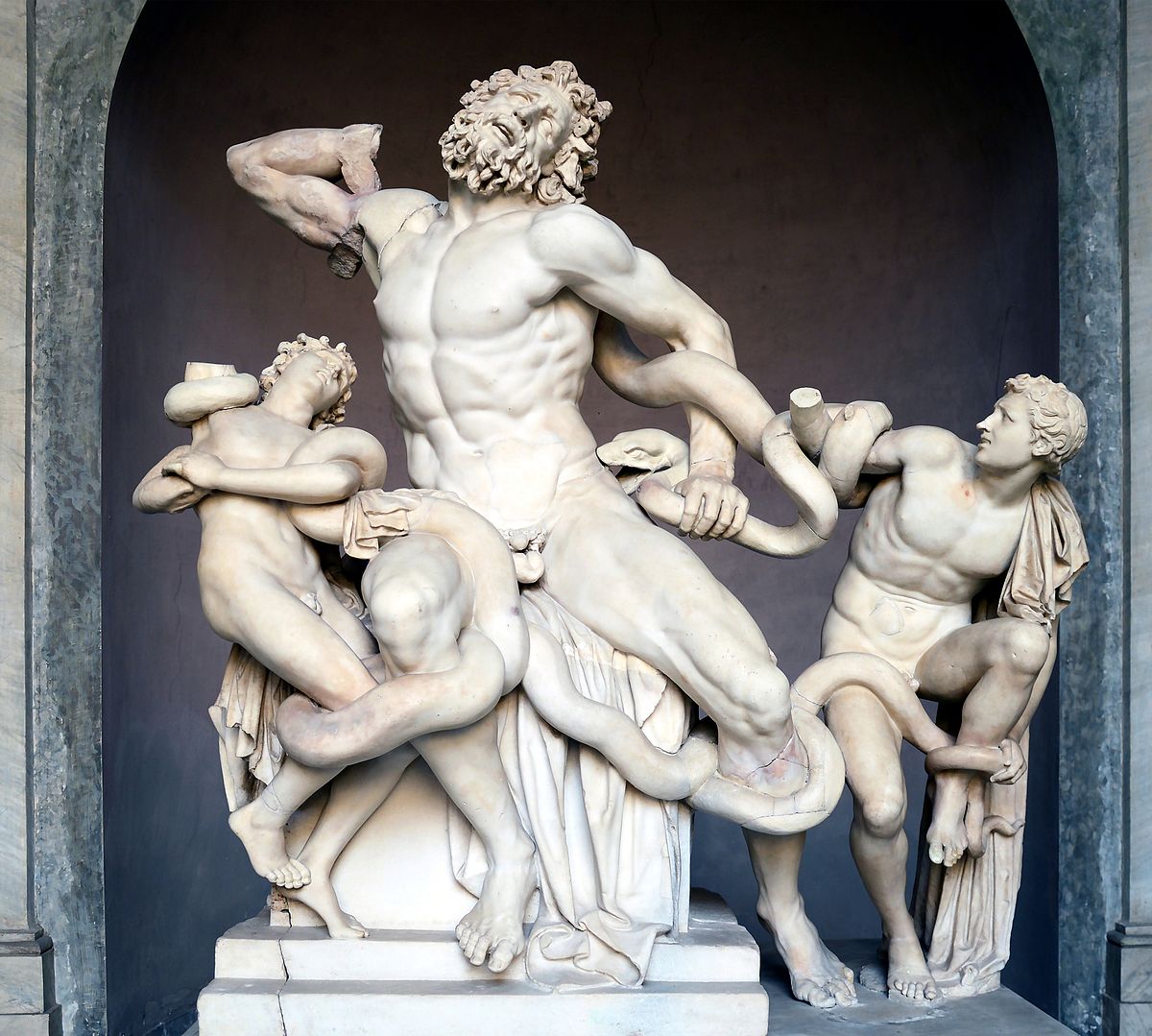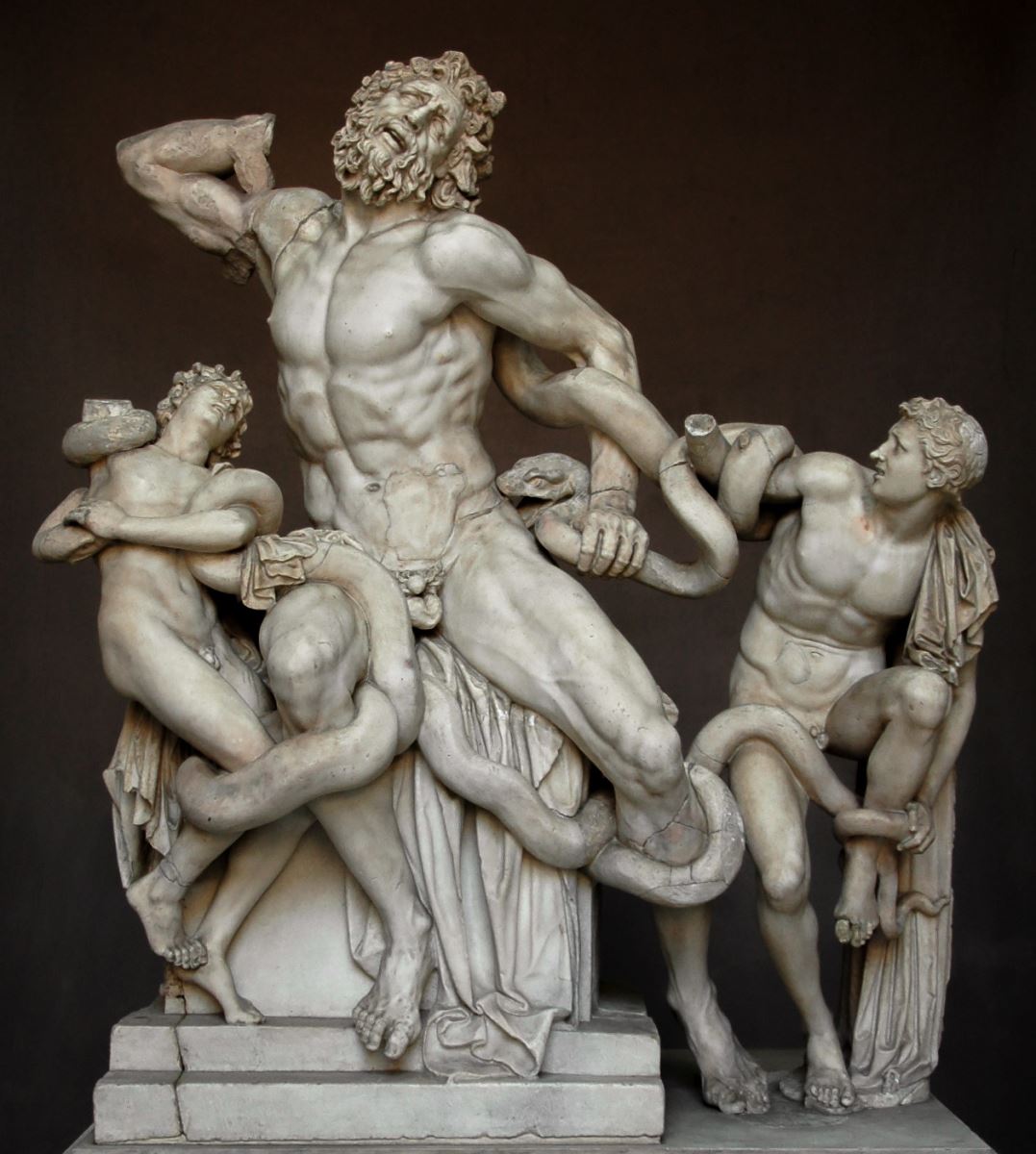The statue of Laocoön and His Sons statue is near life-size and the group is a little over 2 m (6 ft 7 in) in height, showing the Trojan priest Laocoön and his sons Antiphantes and Thymbraeus being attacked by sea serpents.

The group has been called "the prototypical icon of human agony" in Western art, and unlike the agony often depicted in Christian art showing the Passion of Jesus and martyrs, this suffering has no redemptive power or reward. The suffering is shown through the contorted expressions of the faces (Charles Darwin pointed out that Laocoön's bulging eyebrows are physiologically impossible), which are matched by the struggling bodies, especially that of Laocoön himself, with every part of his body straining.

Pliny attributes the work, then in the palace of Emperor Titus, to three Greek sculptors from the island of Rhodes: Agesander, Athenodoros and Polydorus, but does not give a date or patron. In style it is considered "one of the finest examples of the Hellenistic baroque" and certainly in the Greek tradition, but it is not known whether it is an original work or a copy of an earlier sculpture, probably in bronze, or made for a Greek or Roman commission. The view that it is an original work of the 2nd century BC now has few if any supporters, although many still see it as a copy of such a work made in the early Imperial period, probably of a bronze original. Others see it as probably an original work of the later period, continuing to use the Pergamene style of some two centuries earlier. In either case, it was probably commissioned for the home of a wealthy Roman, possibly of the Imperial family. Various dates have been suggested for the statue, ranging from about 200 BC to the 70s AD, though "a Julio-Claudian date [between 27 BC and 68 AD] … is now preferred".

Although mostly in excellent condition for an excavated sculpture, the group is missing several parts, and analysis suggests that it was remodelled in ancient times and has undergone a number of restorations since it was excavated. It is on display in the Museo Pio-Clementino, a part of the Vatican Museums.

According to wikipedia.




![[HONORARY DOCTORATE OF RECORD FOR PRACTICE AND EMPIRICAL RESULTS – 2017] LY THI MAI (HO CHI MINH CITY, VIETNAM)](https://aseanrecords.world/wp-content/uploads/2024/04/0_16-27_jpg_751-218x150.jpg)








